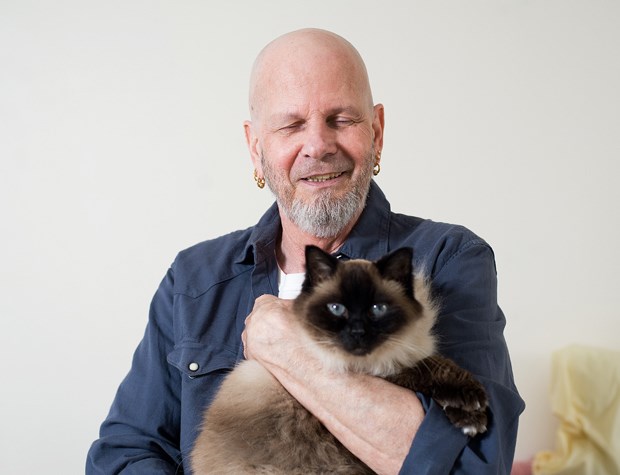Sponsored by Canadian National Institute for the Blind
Robert Schabler describes losing his sight as “a learning process beyond imagination.”
A decade ago, the Vancouver resident and his wife, Irna, enjoyed the view of the city from their apartment overlooking English Bay, often using binoculars to take a closer look at the mountains, seabirds and passing ships.
“Then the lenses on the right side of the binoculars seemed to be covered in smudgy grease spots,” he says. “I used to take the binoculars apart, clean them and put them back together, never once dreaming that it was my eye and not the lens of the binoculars that was the problem.”
It wasn’t long before Schabler visited his optometrist and was told what was happening to his vision: He had glaucoma, one of the most common but serious eye diseases in Canada, affecting 250,000 Canadians.
Caused by high pressure in the eye, glaucoma leads to damage of the optic nerve that often results in partial vision loss or even complete blindness.
For Schabler, the diagnosis came too late and the damage to his vision was already done. Preserving what was left of his sight may well have been impossible.
“I didn’t take the news very well,” says Schabler, a bookbinder, whose failing sight led him to give up his career eight years ago at 60. “Like a lot of people, I went through a period of time – I call it my ‘under the blanket time’ – which was very difficult.”
His sight deteriorating fast, Schabler says he just wasn’t himself anymore. The traditionally upbeat and optimistic retiree was now feeling angry, pessimistic and reclusive – scared to step outside his own home for fear of getting lost or hurting himself on the busy streets of downtown Vancouver.
He even cancelled a cross-country road trip he and Irna had been planning for his retirement, sure that his days of travel and adventure were behind him. He’d become a prisoner in his own home.
“I remember saying to my wife, ‘I’ll never walk out of this place. I’m not like other people anymore. I’ll never go through those doors.’”
Then finally, at Irna’s urging, Schabler contacted CNIB, a registered charity that delivers practical and emotional rehabilitation services to Canadians who are blind or partially sighted from coast to coast.
That’s when he met Dariusz, a CNIB mobility specialist working out of the organization’s Vancouver location.
With Dariusz by his side and a new white cane in tow, he started to learn how to walk safely without sight. The pair began slowly, with short walks in low-traffic areas – Schabler taking those first tentative steps down the sidewalk, tapping his white cane on the ground in front of him, while Dariusz gave advice and helped him get a sense of his surroundings.
The journey was slow. In fact, it was 10 months in total that the pair spent working together on a regular basis. Gradually, the quiet residential roads they’d started with gave way to busy side streets and intersections, and eventually, the bustling downtown core of B.C.’s largest metropolis.
Somewhere along the way, Schabler got his confidence back.
“I felt like I’d been lying on the floor in a dark room, with my hand grasping at the lowest rung of a ladder ... And Dariusz came along, reached out his helping hand and slowly guided me up the ladder.
“I’m not disabled – I am enabled,” he says. “CNIB got me going again; they got me back on my horse.”
Today, Schabler is navigating city streets – and even Vancouver’s busy SkyTrain system – like a pro. No longer confined to his apartment, he’s getting outside and living life again. He even says that, in some ways, he can still see – just not in quite the same way as he used to.
“I see my daughter by the hug that I give her ... and I see my wife’s face and the smile that I fell in love with 39 years ago. I see that with my cupped hands upon her cheeks.”



